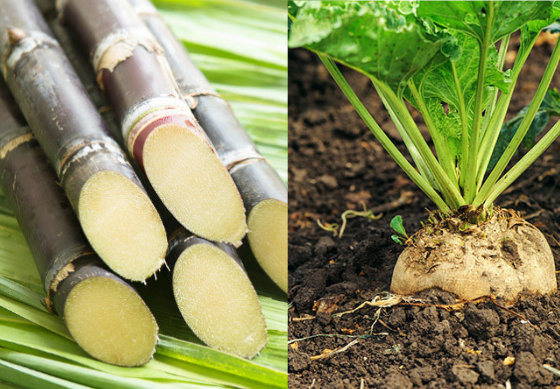The discussion of beet sugar vs cane sugar often includes comparisons of their glycemic index.
The discussion of beet sugar vs cane sugar often includes comparisons of their glycemic index.
Blog Article
Exploring the Distinctions being used and Benefits In Between Beet Sugar Vs Cane Sugar
In the cooking globe, the choice in between beet sugar and cane sugar is not merely about sweetness yet involves a nuanced consideration of flavor, application, and influence. While both sugars stem from various plants, each undergoes unique production procedures that discreetly affect their characteristics and suitability for different recipes.
Origins and Production Processes of Beet and Cane Sugar

Walking stick sugar, on the various other hand, comes from the sugarcane plant, a tropical turf native to Southeast Asia but currently grown in exotic zones worldwide - beet sugar vs cane sugar. The production of cane sugar starts with the harvesting of cane stalks, which are squashed to launch the juice.

Nutritional Material and Wellness Considerations

When comparing the dietary material of beet sugar and cane sugar, it ends up being obvious that both types essentially provide the very same calorie values, with about 16 calories per tsp and no considerable nutrient diversity. Each is made up nearly completely of sucrose, which is a basic carbohydrate that offers fast energy but lacks vitamins, minerals, or fiber. This resemblance reaches their impact on health, specifically worrying blood glucose levels. Both sugars, when eaten in excess, can add to raised blood sugar levels, a risk factor for diabetes mellitus and various other metabolic disorders. Moreover, extreme intake can bring about weight gain and dental troubles, as both sugars are similarly cariogenic, promoting tooth degeneration. From a health and wellness perspective, regulating intake of any kind of type of sugar, whether from beet or cane, is advisable to stay clear of these potential adverse impacts on health. Therefore, neither holds a distinct advantage over the other in terms of wellness benefits.
Taste Accounts and Culinary Applications
Regardless of their similar chemical frameworks, beet sugar and cane sugar differ subtly in taste, which can influence their use in different culinary contexts. Walking stick sugar often lugs a tip of molasses, even in its polished form, lending a warm, caramel-like undertone that enhances baked goods, coffee, and chocolate-based dishes. This mild molasses flavor is especially valued in the baking industry for including deepness to desserts and breads. On the various other hand, beet sugar is defined by its extremely fine-tuned, neutral taste, making it a versatile sweetener that does not modify the taste accounts of meals. This neutrality is particularly helpful in fragile recipes, such as light pastries, lotions, and some sauces, where the inherent tastes of various other components are meant to stand apart. Chefs and food suppliers may pick one kind of sugar over the other based on the wanted flavor end result of their culinary creations.
Ecological Impact and Sustainability
While both beet and cane recommended you read sugars are stemmed from plants, their environmental influences differ considerably as a result of the unique methods of farming and processing required for each and every. Sugar beet growing often includes extensive automation, which can increase nonrenewable fuel source consumption and carbon emissions. Beets can be grown in cooler climates and need much less watering, possibly reducing water usage compared to sugarcane. Sugarcane, on the other hand, is typically grown in tropical regions where it depends heavily on irrigation and a longer growing period, boosting its water impact.
In addition, the handling of sugarcane often produces a significant amount of waste, including bagasse, which, although functional as biofuel, often adds to air pollution if burned inefficiently. Sugar beet processing utilizes even more of the raw products, leading to much less waste. Both markets deal with obstacles in reducing recommended you read their ecological impacts, however ongoing innovations in farming techniques and waste monitoring are intending to improve sustainability.
Economic Variables Influencing the Sugar Industry
The economic characteristics of the sugar sector are significantly influenced by global market demands and trade policies. In regions where sugarcane or sugar beet production is subsidized, producers might have an economic benefit that allows them to offer lower prices on the global market.
Additionally, fluctuations in global demand for sugar, influenced Visit Your URL by nutritional trends and industrial use in food products, directly impact prices and production levels. beet sugar vs cane sugar. Weather also play a pivotal role, as they can considerably impact crop returns and, subsequently, the supply chain. This irregularity presents a degree of economic uncertainty that can lead to investment volatility in sugar manufacturing markets, influencing decisions from planting to market approach
Verdict
To conclude, both beet and cane sugar have special high qualities that fit different cooking demands. While cane sugar conveys a rich taste suitable for enhancing baked items, beet sugar's nonpartisanship is excellent for lighter meals. Nutritional resemblances regardless of, their distinct manufacturing processes and ecological influences add complexity to the choice between them. Therefore, recognizing these distinctions helps cooks and consumers make informed decisions that straighten with their wellness, culinary, and ethical choices.
Report this page